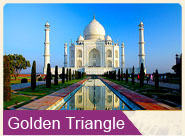Kumbhalgarh is a Mewar fortress in the Rajsamand District of Rajasthan state in western India. Built during the course of the 15th century by Rana Kumbha, and enlarged through the 19th century, Kumbhalgarh is also the birthplace of Maharana Pratap, the great king and warrior of Mewar. Occupied until the late 19th century, the fort is now open to the public and is spectacularly lit for a few minutes each evening. Kumbalgarh is situated 82 km northwest of Udaipur by road. It is the most important fort in Mewar after Chittaurgarh.
Built on a hilltop 1100 metres above sea level, the fort of Kumbhalgarh has perimeter walls that extend 36 kilometres.[1] The frontal walls are fifteen feet thick. Kumbhalgarh has seven fortified gateways. There are over 360 temples within the fort, 300 ancient Jain and the rest Hindu. From the palace top, it is possible to look tens of kilometers into the Aravalli Range. The sand dunes of the Thar desert can be seen from the fort walls.
According to legend, in 1443, the Maharana of Kumbhalgarh, Rana Kumbha, was initially repeatedly unsuccessful in attempts to build the fort wall. A spiritual preceptor was consulted about the construction problems and advised the ruler that a voluntary human sacrifice would solve whatever was causing the impediment. The spiritual advisor advised building a temple where the head should fall, and to build the wall and the fort where the rest of his body lay. As can be expected, for some time no one volunteered, but one day, a pilgrim, or some versions suggest a soldier, and some the spiritual preceptor and the pilgrim were one and the same, volunteered and was ritually decapitated. Today the main gate of the fortress, Hanuman Pol, contains a shrine and a temple to commemorate the great sacrifice.
According to popular folklore, Maharana Kumbha used to burn massive lamps that consumed fifty kilograms of ghee and a hundred kilograms of cotton to provide light for the farmers who worked during the nights in the valley.
The Kumbhalgarh was built and ruled by Kumbha and his dynasty who were Sisodia descendents.
Kumbhalgarh in its present form was developed by, and said to be personally designed by Rana Kumbha. Rana Kumbha's kingdom of Mewar stretched from Ranthambore to Gwalior and included large tracts of erstwhile Madhya Pradesh as well as Rajasthan. Out of the 84 forts in his dominion, Rana Kumbha is said to have designed 32 of them, of which Kumbhalgarh is the largest and most elaborate.
Kumbhalgarh also separated Mewar and Marwar from each other and was used as a place of refuge for the rulers of Mewar at times of danger. A notable instance was in the case of Prince Udai, the infant king of Mewar who was smuggled here in 1535, when Chittaur was under siege. Prince Udai who later succeeded to the throne was also the founder of the Udaipur City. The fort remained impregnable to direct assault, and fell only once, due to a shortage of drinking water, to the combined forces of Mughal Emperor Akbar, Raja Man Singh of Amber, Raja Udai Singh of Marwar, and the Sultan of Gujarat.
About Kumbalgarh | | | Packages












